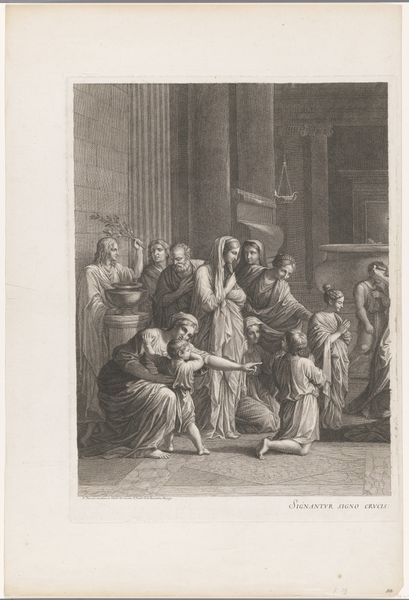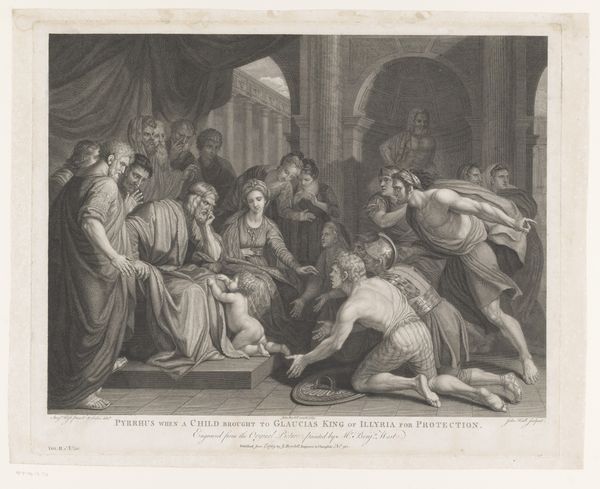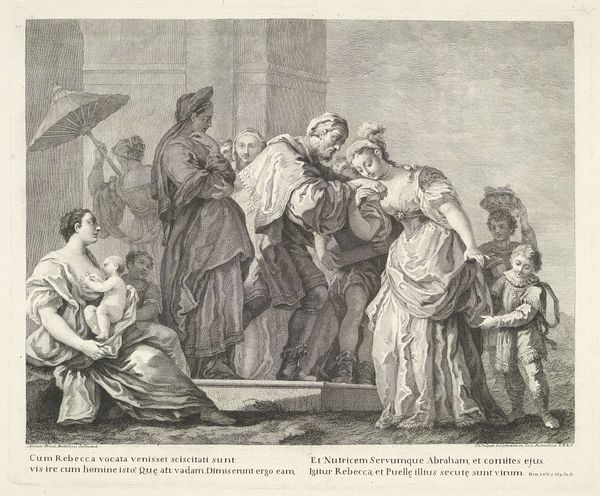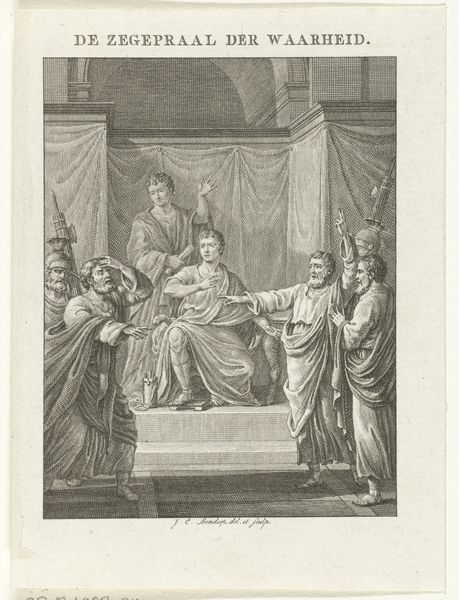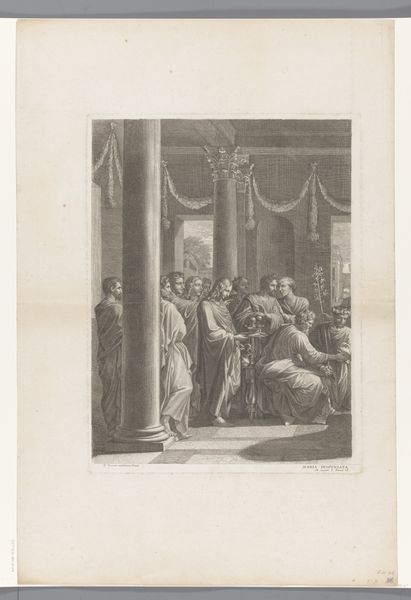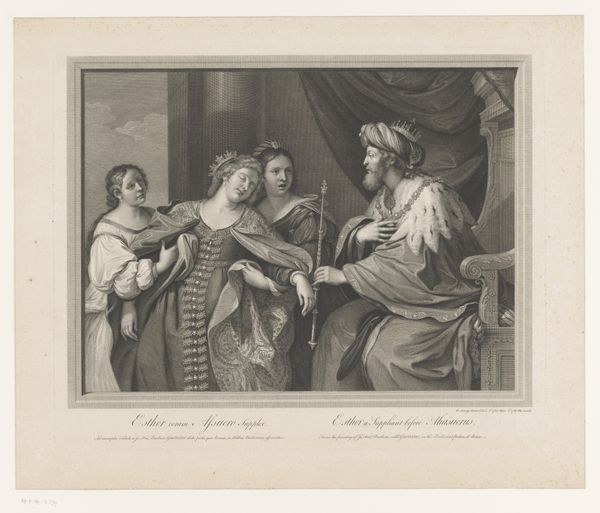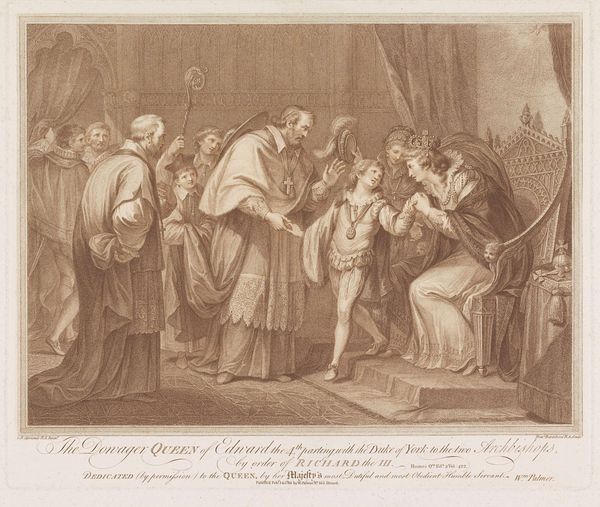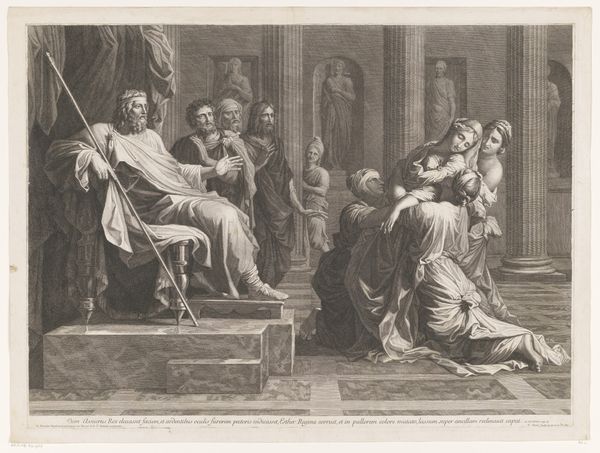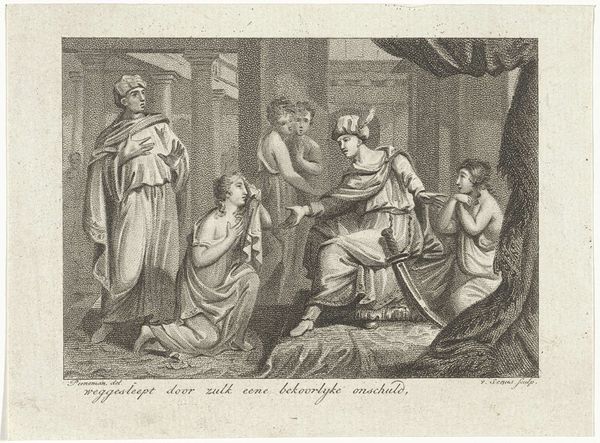
print, engraving
#
neoclacissism
#
narrative-art
# print
#
greek-and-roman-art
#
figuration
#
line
#
history-painting
#
academic-art
#
engraving
Dimensions: height 493 mm, width 608 mm
Copyright: Rijks Museum: Open Domain
Curator: Here we have Charles Howard Hodges' "The Banishment of Cleombrutus by Leonidas II," created in 1789. It’s an engraving, a print, currently residing here at the Rijksmuseum. What are your first thoughts? Editor: Stark. It’s dramatically stark. That starkness highlights the emotionality of the scene, but at a distance. Like, I feel like I'm observing sorrow instead of being immersed in it. Almost as though this scene took place a thousand years ago. Curator: Yes, the Neoclassical style certainly lends that sense of historical distance and almost... manufactured drama. Notice the meticulous lines, the composition itself and the context of printmaking as a medium; what does this say about broader accessibility? Editor: Well, I guess creating this artwork through prints meant that multiple copies could be produced quickly, which ensured greater distribution. It's an artwork intended to depict one person’s narrative, but shared through means accessible to more. I mean it gives access, on some level, to a history only reserved for specific classes of people. Does this amplify or dilute Cleombrutus' personal story of banishment? Curator: Good question. We can delve deeper by considering what materials went into making this engraving and why Hodges would select the engraving method specifically to portray historical narratives, right on the cusp of the French Revolution no less? Editor: Perhaps, Hodges sought to offer a perspective, a way of making meaning. Is this really just the ‘banishment’ of one person, or something more that allows all to examine their sense of banishment? The almost severe use of the academic style is itself interesting, but then there is softness here as well, mostly visible through his rendering of the women who are surrounding the banishee. Curator: Agreed. In these images, the production is everything. By breaking down the work through labor, the act of making this accessible is tied to the overall impact it could achieve and understanding of its context. We cannot disconnect those. Editor: Yes. It is not only seeing or portraying a banishment in its personal, psychological drama—but in also how it has the capacity to inform the cultural and political climate through its production and reception. It resonates on multiple levels. Food for thought.
Comments
No comments
Be the first to comment and join the conversation on the ultimate creative platform.
